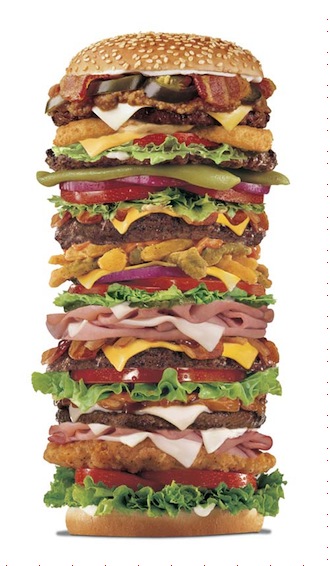Diets and Nutrition – The 5:2 Diet

Diets and Internet
Structuring a diet is, as much as giving nutritional advice, is a wide and complex subject.
On the internet there is a monumental amount of information. There are also many diets with plenty of information to support their results in weight loss or muscle gain.
The internet has only one major handicap, because it has to deal with the “Generic User”. Those looking at websites for answers mostly have one single request: give-me-the-solution.
While the internet is a great source of information, dieting, like many life decisions, does not benefit from solely internet-based investigation.
Why? Because what works for some, may not necessarily work for you.
You might be the “Generic User” but what you want is not a Generic Diet.
The correct diet starts with you and it’s the the diet that will have to adapt to your needs, not you that should adapt to the diet.
Is it possible to find such a thing on the web?
A serious diet start with analysis of your body, first of which should be a blood test. Other tests should follow as well but we’ll tackle this subject in more depth in a dedicated article, to clarify how to proceed and how a detailed and tailored diet can be created.
Following on from a conversation around nutrition and weight loss, the subject of the 5:2 diet arose. It is a good example of a well-known and standardised diet that we can analyse.
The principle of the 5:2 is fairly simple, 2 days of calories restriction per week and 5 days of “free” meals.
500 kcal for the ladies, 600 kcal for the gents on those two days.
The promise is to achieve weight loss between .6KG to 1KG per week.
This is therefore a very simple way of structuring the diet, the week, and ultimately the weight loss.
The questions to answer then, looking at this as a method are various:
Question 1. Is it healthy?
 This is the most important question.
This is the most important question.
Generally speaking it’s not ideal. Because it doesn’t teach you anything, it just make you starve for 2 days and let you eat for 5. From a health point of view this makes no sense.
If you undertake a diet to lose weight or to improve your health it’s because what you are currently doing isn’t working. You therefore need to find out some new information and change what you are eating. Not eating for 8 days per month will not do the trick.
Question 2. Can it work?
Calorie restriction does work.
It is worth reminding ourselves that there are processes in our bodies that don’t work in hours or days, but over longer periods of time.
Weight balance is one of them. A calorie-restricted diet spread across the week (for example) would bring equally good results and possibly be better tailored and supportive of your lifestyle than 2 days of starvation would.
Here are some other points to reflect on.
The Calorie Swing
Pros:
Calorie swing (varying your calorie intake over a period of time) is a well used system to lose weight and help improve performance. In this area of the 5:2 idea hits the target. By setting 2 days of calories cut per week you can make sure your weekly intake is under control. If you look after the other 5 days (contradicting the rules of the classic 5:2) you can gain results. 
Cons:
The swing needs to be very well planned.
Take into account:
– the lifestyle of the person (Athlete? Working at the desk? Or in a building site?)
– the type of sport the person may be doing (endurance or strength?)
– the number of workouts in the week/month and their intensity (competition time, pre-comp prep or off season? Performance or aesthetics-based workouts?)
Having two days off the standard calorie intake, picked at random, doesn’t make much sense.
Also, the calorie swing need to be planned in terms of the source of calories that you need to use; from carbohydrates to proteins or fat; 1,000 kcal from protein sources has a very different impact on the body and its metabolism than 1,000 from carbs or fat.
Two days of reduced calorie intake can be very prohibitive for people working in a physical job as well as for people with high pressure jobs, as the lack of sugar can be very difficult to handle while trying to concentrate, let alone managing difficult decision-making processes.
Nutritional Efficiency
Pros:
Cutting down on calories should make you think more about what you eat and what you actually need in order to get through the day healthily. Personal awareness and a push to find out more about what’s good for you is always a good thing.
Cons:
There are another 5 days in the week. You can’t actually lose weight eating what you want for the majority of the week. Because human nutrition is more complex than just cutting calories! You need to know how much fibre, carbohydrate, protein, fat, vitamins, and minerals you should be eating in total and from which sources, and not just for a few days a month.
Also, more importantly, from a health perspective, overeating elements that don’t work for your body doesn’t just mean you just don’t lose weight, it could also mean damaging your health.
Easy examples are someone with already high tryglicerids in the blood eating too much fat food, or glycemic-sensitive people eating too much sugar.
Bear in mind you don’t need to be a diabetic to be sugar sensitive or for your first heart attack to just put you on the “at risk” category.
Peaking frequently with one of these elements will bring your body to a dangerous stress level and could induce illnesses.
Those 5 days must be handled well; introducing all the elements that the specific person needs in order to achieve the goals both in weight loss, health and sport performance.
Performance
Pros:
If well distributed, the 2 day cut off could be interesting from a performance perspective.
The coach and the dietician should be able to plan things together to maximize both the diet and the workout sessions. They should both know the subject and be well versed in the use of the calorie swing system and in the source of calories available in both the 2 cut off days and the 5 full ones. 
Cons:
If performance is the aim then is the diet that should be tailored around the goal.
The dietician should make sure that the needs of the athlete are all well covered, from the basic elements to maintain health, to those to support the maximum performance.
Playing around with the 5:2, specially on the 5 days, can be a useful exercise but if done on your own it could take quite a while to play with. A dietician would be able to solve the problem but at that point, why not follow his advice directly rather than trying to fit his ideas into another diet?
Supplements
Pros:
It is appropriate, in certain situations, to use supplements for a period of time. To solve a problem, to deal with a particular situation that requires extra attention or give the body a provisional extra boost through an interim period.
 Cons:
Cons:
In some cases the 5:2 is presented and promoted with a good amount of supplements to be taken in the 2 days cut off.
A diet based on supplements is a failure. Supplements are there to make up for a lack somewhere.
If the diet requires supplements, it doesn’t fulfill the principle criteria: feed you.
A diet that doesn’t supply you with all the elements you require is not a good diet.
A nutritional plan should be able to sustain itself without the help of lab-processed products.
From these few points it’s interesting to see how a diet, even if simple, can be difficult to match to everyone’s needs.
The human body is complex and complex answers sometimes are inevitable.
The Subzero Coaching Team
Seminars on this and many more topics are delivered in all our ski instructor courses.
Check out our Autumn and Winter Gap Courses, ISIA Level 3 Course, Level 4 Course, Race Training as well as the Full Focus, our one to one coaching course.
Looking for summer training? Check out our Summer Ski Instructor Training schedule!
